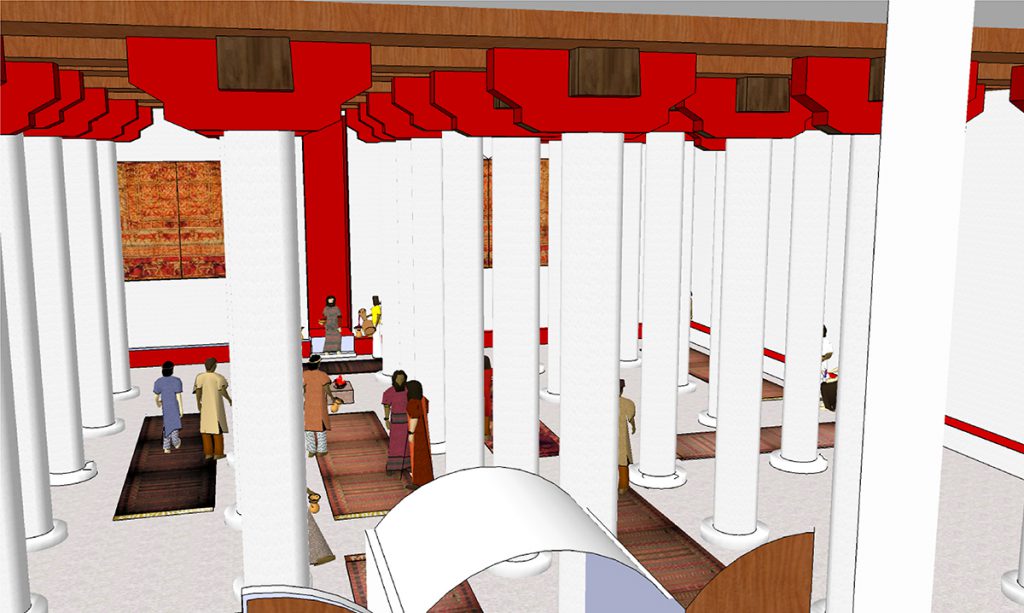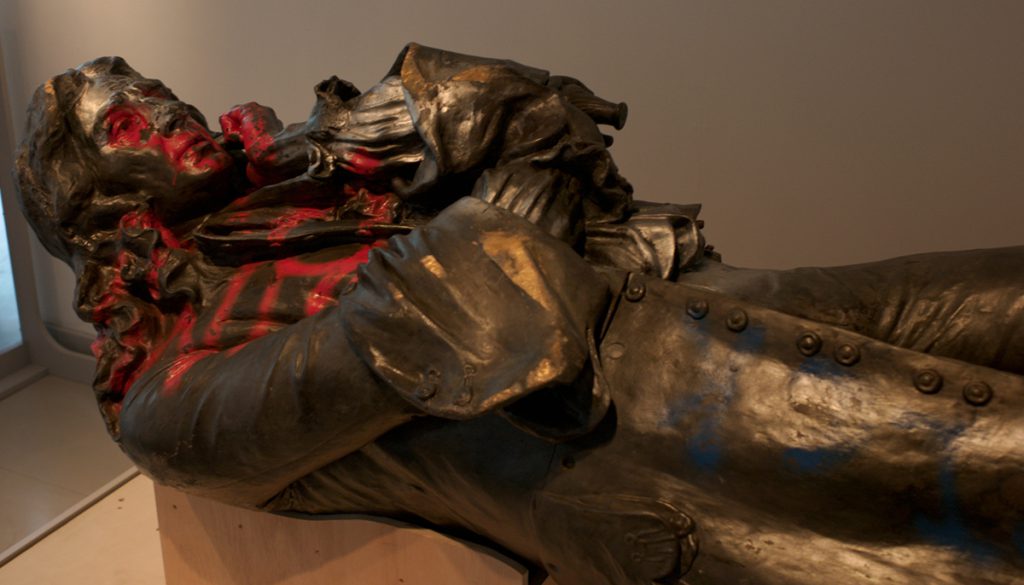A community’s material things can be active participants in the democratic process. Hilary Gopnik argues that the inclusion of materiality in Jean-Paul Gagnon’s science of democracy will broaden the range of the inquiry and deepen the texture recovered
Some time around 800 BCE, Median communities in the Zagros mountains of western Iran originated a new form of building. These buildings' main feature was a large central room, a rectangular grid of columns supporting the roof. The builders of these structures positioned their columns closer together than the size of available wooden beams required, suggesting there was a specific purpose behind the layout:

The columned halls were, pretty clearly, meeting places. My research argues that they were a critical component in congregational decision making for communities threatened with imperial expansion by the neighbouring Assyrian Empire.
These congregational spaces, along with the pottery, animal bones, and plant remains left behind in them, are some of the only remaining direct evidence we have for the functioning of these Zagros polities. They are communities that rightly belong in Jean-Paul Gagnon’s data mountain of democracies.
Yet the only way we could account for the Medes in Gagnon’s database is from a modern analyst's perspective. Such an analyst might write about Medes society as a 'democracy' in an extension of our current usage. The Medes people themselves did not keep written records, possibly, as James C. Scott suggests, to avoid the bureaucracy of imperial hegemony. The Assyrians, by contrast, left us copious texts. However, they were so deeply imbued in their own imperial ideology that their descriptions of these communities are critically biased.
In an age before written records, societies' only claim to inclusion in Gagnon's database must come from the objects they left behind
Graeber and Wengrow’s majestic new book examines the growth of inequality. It contains many examples of similar democratic (or democratic-ish) polities whose only claim to inclusion in Gagnon’s database would come from the things they left behind.
The possible exclusion from the database of democracies without a voice has been a key theme of this Loop series. Marta Wojciechowska and Hans Asenbaum highlight the power imbalance of the written word. Kathleen McCrudden Illert and Yida Zhai argue that the signifier 'democracy' leaves out many polities that should contribute to our understanding of democracy’s total texture.
The inclusion of the material attributes of democratic systems—the 'things' of democracy—might help alleviate these linguistic biases. It would also contribute to Sonia Bussu’s call for a more precise focus on democracy in communities' everyday lives. But this 'thingification' of a science of democracy promises to go beyond identification and description of historical democracies. Archaeologists have come to understand the material world, manmade and natural, as more than simply traces of human activity. We now regard these traces of the ancient material world as active participants in the processes around them.
Inclusion of the material attributes of democratic systems—the 'things' of democracy—might help alleviate these linguistic biases against ancient democracies without a voice
The physical loci of congregation may have shaped communal decision making as much as any formal political statement. The labour required to build the Median columned halls, their visual dominance over the surrounding countryside, the position of decision-makers among their columns, even the lasting impression of their ruin after abandonment, were all as much part of the process of democracy as the human agents who lived among them.
The Pnyx, on the other hand, was established in Athens as an open meeting place for the demos, with few built interventions. It came into being at a time when large-scale public construction was a marker of Athenian imperial dominance. This location for decision-making created an association between consensus and the unmodified landscape in a way that is not, and perhaps could not be, acknowledged in contemporary texts.
The importance of the materiality of democracy extends beyond archaeologically recovered communities to even the most familiar democratic contexts. The recent toppling of statues of US confederate generals was more than a symbol of discontent. It went to the very heart of the experience of the urban landscape of American cities. These monuments weren’t merely standing in for a long-dead past. They were interacting with a present that had changed their meaning from commemoration to oppression.
Recently toppled monuments were not just standing in for a long-dead past, but interacting with a present that had changed their meaning

After its public dismantling, the mutilated statue of the Bristol slave trader Edward Colston was preserved, with graffiti intact, in a museum dedicated to telling the story of the city. This speaks to the endurance of material objects as agents independent of the intentions of their maker.
Wittengenstein used the metaphor of language as an ancient city, as evoked in this series by Hojjatollah Sadeqi. The metaphor hinges on our recognition of both the durability and transmutability of the material world around us. But archaeologists might reverse this image. They might argue instead that an ancient city is like a language. It is a complex network of meaning that depends on the interaction of its constituent parts, including the humans that live in it and the landscape that surrounds it. Bringing that material language into a database of democracy would both expand its field, and deepen its texture.
Writing about the many early cities that lack top-down governance, Graeber and Wengrow ask if we dare call them democracies. If we acknowledge the importance of materiality to the democratic process, we can confidently include a broader range of communities in Gagnon’s data mountain.
No.80 in a Loop thread on the science of democracy. Look out for the 🦋 to read more in our series